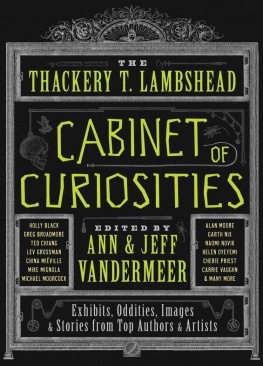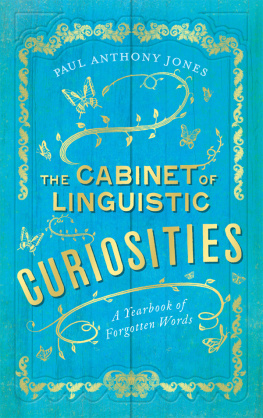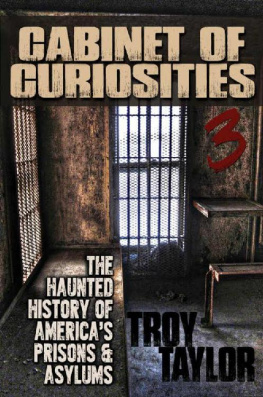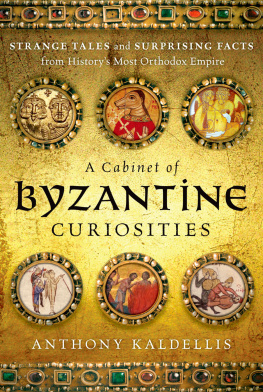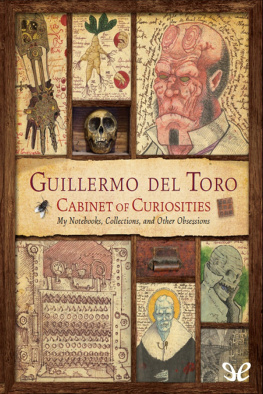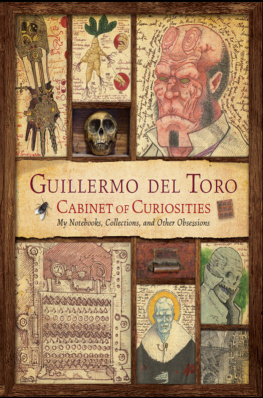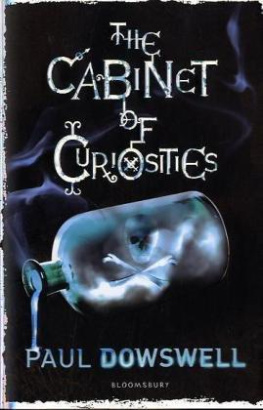The
Thackery T. Lambshead
Cabinet of Curiosities
Exhibits, Oddities, Images, and Stories from Top Authors and Artists
Edited by
Ann & Jeff VanderMeer


Dedicated to the memory of Kage Baker,
a wonderful writer and a good friend of Dr. Lambshead.
You are not forgotten.
Contents
Introduction:
The Contradictions of a
Collection: Dr. Lambsheads Cabinet
By the Editors

A photograph of just one shelf in Lambsheads study displaying the overflow from his underground collection (1992). Some items were marked return to sender on the doctors master list.
T o his dying day, Dr. Thackery T. Lambshead (19002003) insisted to friends that he wasnt much of a collector. Things tend to manifest around me, he told BBC Radio once, but its not by choice. I spend a large part of my life getting rid of things .
Indeed, one of Lambsheads biggest tasks after the holiday season each year was, as he put it, repatriating well-intentioned gifts with those who might more appropriately deserve them. Often, this meant reuniting exotic items with their countrymen and -women, using his wide network of colleagues, friends, and acquaintances hailing from around the world. A controversial reliquary box from a grateful survivor of ballistic organ syndrome? Off to a friend in the Slovak Republic who knows a Russian who knows a nun. A centuries-old assassins twist kris (see the Catalog entries) absentmindedly sent by a lord in Parliament? Off to Dr. Mawar Haqq at the National Museum in Kuala Lumpur, Malaysia. And so on and so forth.
He kept very little of this kind of material, not out of some loyalty to the Things of Britain, but more out of a sense that the West still has a lot to answer for, as he wrote in his journals. Perhaps this is why Lambshead spent so much time in the East. Indeed, the east wing of his ever-more-extensive home in Whimpering-on-the-Brink was his favorite place to escape the press during the more public moments of his long career.
Regardless, over time, his cabinet of curiosities grew to the point that his semipermanent loans to various universities and museums became not so much philanthropic in nature as acts of self-defense ( LIFE Magazine, Hoarders: Curiosity or a New Disease?, May 19, 1975). One of the most frenzied of these acts occurred in divesting myself of the most asinine acquisition I ever made, the so-called Clockroachdocumented in this very volumewhich had this ridiculous habit of starting all on its own and making a massacre of my garden and sometimes a stone fence or two. Drove my housekeeper and the groundskeeper mad.
Breaking Ground
This question of the cabinets growth coincides with questions about its location. As early as the 1950s, there are rather unsubtle hints in Dr. Lambsheads journal of creating hidden reservoirs for this river of junk and darkness and subterranean calm may be best for the bulk of it, especially since the collection threatens to outgrow the house.
In the spring of 1962, as is well-documented, builders converged on Lambsheads abode and for several months were observed to leave through the back entrance carrying all manner of supplies while removing a large quantity of earth, wood, and roots.
Speculation began to develop as to Lambsheads intentions. If even Dr. Lambshead despairs of compromise, what should the rest of us, who do not have the same privilege, do? asked the editor of the Socialist Union Guild Newsletter that year, assuming that Lambshead, at the time a member, was building a personalized bomb shelter with access to amenities many of us could not dream to afford in our everyday lives, nor wish to own for fear of capitalist corruption. In the absence of a statement from Lambshead, the Fleet Street press even started rumors that he had discovered gold beneath his property, or ancient Celtic artifacts of incredible value. Whatever Lambsheads motivations, he must have paid the builders handsomely, since the only recorded comment from the foreman is: Somethings wrong with the pipes. Full stop. ( Guardian, Avowed Socialist Builds Anti-Democracy Bunker Basement, April 28, 1962)

Floor plan found in Lambsheads private files, detailing, according to a scrawled note, the full extent of a museum-quality cabinet of curiosities that will serve as a cathedral to the world, and be worthy of her.
Throughout the year, Lambshead ignored the questions, catcalls, and bullhorn-issued directives from the press besieging his gates. He continued to entertain guests at his by-now palatial homeincluding such luminaries as Maurice Richardson, Francis Bacon, Molly Parkin, Jerry Cornelius, George Melly, Quentin Crisp, Nancy Cunard, Angus Wilson, Philippe Jullian, and Violet Trefusisand, in general, acted as if nothing out of the ordinary was occurring, even as the workmen labored until long after midnight and more than one guest reported strange metallic smells and infernal yelping burps coming up from beneath the floorboards. Meanwhile, Lambsheads seemingly preternatural physical fitness fueled rumors involving life-enhancing chambers and ancient rites. Despite being in his sixties, he looked not a day over forty, no doubt due to his early and groundbreaking experiments with human growth hormone.
Why the secrecy? Why the need to ignore the press? Nothing in Lambsheads journals can explain it. Indeed, given the damage eventually suffered by this subterranean space, theres not even enough left to map the full extent of the original excavation. We are left with two floor plans from Lambsheads private filing cabinet, one of which shows his estate house in relation to the basement areaand thus two contradictory possibilities. One of them, oddly enough, corresponds in shape to a three-dimensional model of an experimental flying craft. This coincidence has led to one of the stranger accusations ever leveled against Lambshead (not including those attributed to contamination scholar Reza Negarestani and obliteration expert Michael Cisco). Art critic Amal El-Mohtar, who for a time attempted to research part of Lambsheads cabinet, claimed that It became obvious from Thackerys notes that he was creating a kind of specialized Ark to survive the extermination of humankind, each item chosen to tell a specific story, and his particular genius was to have all of these objectsthis detritus of eccentric qualityhoused within a container that would eventually double as a spaceship. However, it must be noted that this theory, leaked to various tabloids, came to El-Mohtar during a period of recovery in Cornwall from her encounter with the infamous singing fish from Lambsheads collection. Not only had her writings become erratic, but she was, for a period of time, fond of talking to wildflowers.

Floor plan of what Amal El-Mohtar called a nascent spaceshop nee Ark, with a front view of Lambsheads house beneath it.

The most popular of other apocryphal theories originated with the performance artist Sam Van Olffen, who, since 1989, has seemed fixated on Lambshead and staged several related productions. The most grandiose, the musical The Mad Cabinet of Curiosities of the Mad Dr. Lambshead, debuted in 2008 in Paris and London, well after Lambsheads death. Perhaps the most controversial of Van Olffens speculations is that Lambsheads excavations in 1962 were meant not to create a space for a cabinet of curiosities but to remodel an existing underground space that had previously served as a secret laboratory in which he was conducting illegal medical tests. A refrain of Doctor doctor doctor doctor! / Whatcher got in there there? A lambs head? is particularly grating.
Next page
